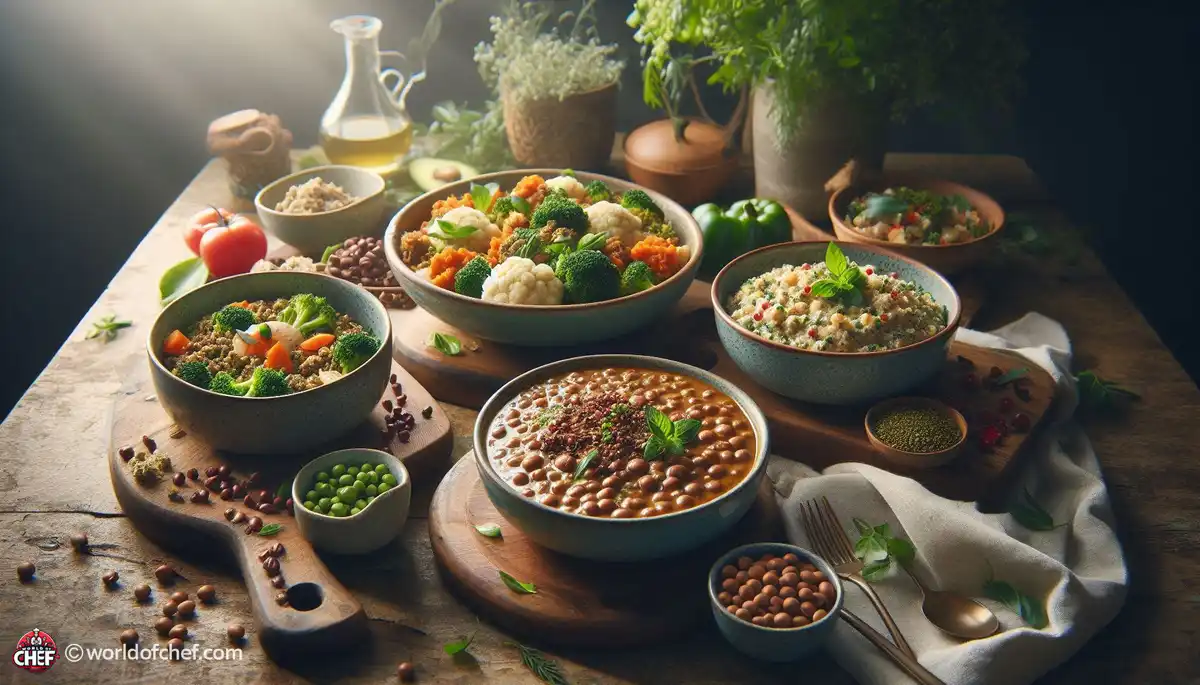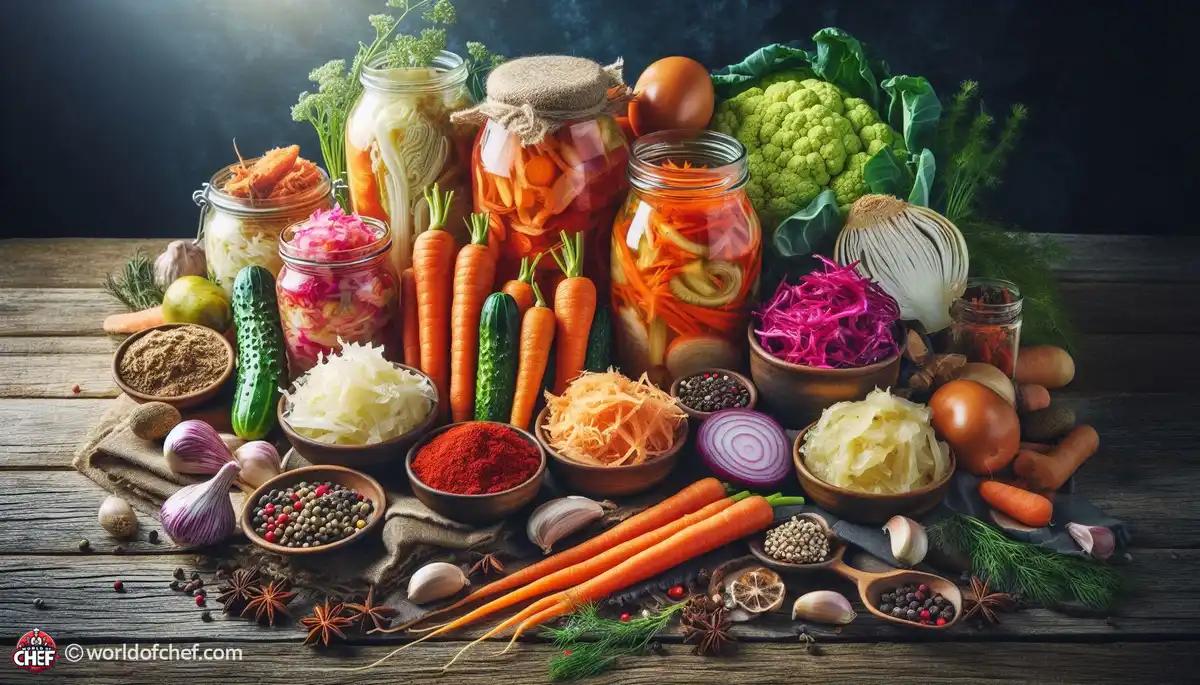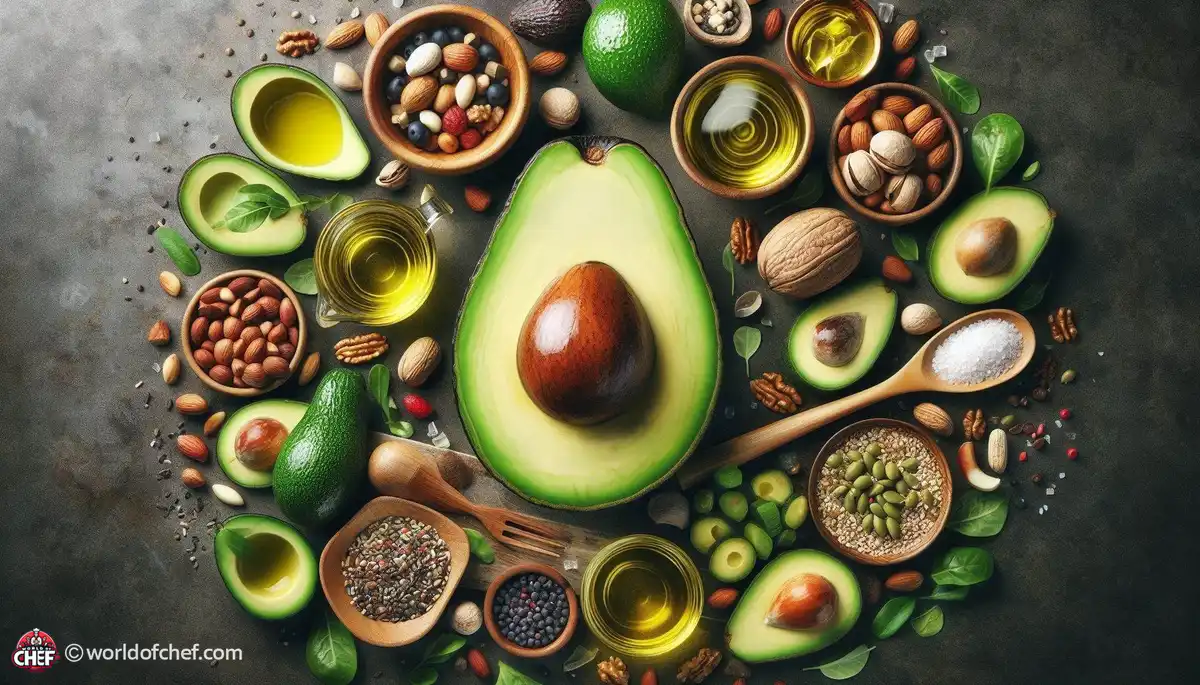
Dinner Delights: High-Fiber Recipes for Every Palate
Clarence Guido - Oct 7, 2024 - 7 min read


Fermentation is an ancient practice that has been used for thousands of years to preserve food and add flavor. Fermentation is simply a natural process by which microorganisms, such as bacteria and yeast, break down sugars and other carbohydrates in food to produce compounds like alcohol and acids. These compounds not only preserve the food but also give it unique flavors and textures.
It is quite amazing indeed the science behind the magic of fermentation. The vegetables submerge into a brine solution that activates beneficial bacteria-lactobacilli and multiply, feed on natural sugars found within the vegetables, and in the course of the metabolism process will produce lactic acid, a natural preservative while providing an acidic environment stopping the harmful bacteria from further multiplication within the fermented vegetables.
Therefore, the fermented vegetables are not only a delicacy but also rich in a number of Health Benefits. First of all, they are very rich in probiotics. Probiotics are friendly bacteria which have a positive effect on gut flora. A healthy balance of gut microbiome ensures proper digestion, immunity, and well-being. Moreover, fermented vegetables are more nutritious than fresh ones. The process of fermentation lets vitamins and minerals become more bioavailable, easier for the body to digest.
Fermenting is much easier to begin than you might think. To ferment, you need the following: the type of vegetables you will be fermenting, salt, water, and any spices or herbs you like for added flavor. For best fermentation, non-chlorinated water and natural source salt such as sea salt or kosher salt is used.
Lacto-fermentation is perhaps the most traditional method of fermentation for vegetables. In the process, a brine solution is prepared and a vegetable is plunged into that brine so that in the absence of oxygen and the presence of salt in the brine, favorable conditions are built for the growth of lactic acid bacteria. That usually requires anywhere from days to a few weeks of time, as the temperature required and amount of flavor achieved would need to be so determined.
Wild fermentation, again, as the name sounds, relies on wild indigenous bacteria and yeast that happen to be already present on the surface of the vegetables. It does not have a starter culture, for example, whey or commercial starters; wild fermentation relies on indigenous microorganisms to start the fermentation process. This may be slow and less predictable than the other methods, but advocates say it captures flavors evocative of a location.
Starter cultures, either in the form of whey or a powdered starter culture, can provide a consistency and reliability in fermentation. Starter cultures are comprised of known strains of bacteria that are selected for their desirable flavor and textural characteristics. They may also be used to accelerate fermentation, which is helpful for new cheesemakers who want to get to relatively consistent results with a minimum of guesswork.
Temperature is fundamental since it has to determine the rates of fermentation by bacteria and yeast. Temperatures high in warmth boost the fermentation rate, low temperatures the time. Variety in use and flavor expectancy dictates that some vegetables ferments well at different temperature levels. The general premise here is that most commonly, it happens between 65°F and 75°F and over different durations, that range from weeks, days, or more.
Sauerkraut is one of the simplest and most delicious fermented vegetables. It is a staple in many cultures. It's pretty easy to make sauerkraut: Shred a head of cabbage and mix it with salt until it begins to exude its juices. Pack the cabbage tightly into a clean jar, making sure that it is completely submerged by its own brine. Let the sauerkraut ferment for about one to two weeks at room temperature then, transfer it into the fridge to slow down the fermentation.
Kimchi is a fermented spicy Korean vegetable dish usually having cabbage, radishes and a combination of many different seasonings. Garlic and ginger along with red-hot chili peppers make a major proportion of seasonings used while preparing the dish. Now chop all vegetables in very small pieces, toss well with salt and your variety of seasonings. Pack the mixture to the jar and press well on it to remove any air space left. Allow it at room temperature for several days to a week and cool to stop fermentation.
These are crunchy sour pickles that can be had singly or added as dressing to sandwiches and salads. Slice cucumbers into spears or rounds, add garlic, dill, and any spices you like, to a jar. Cover cucumbers with a brine solution made from water and salt. Let ferment at room temperature for one to two weeks, depending on your desired level of sourness.
Beet kvass is one of the fermented, homemade East European beverages, prepared by beets, water, and salt. All it takes is chopping beets into little pieces, then placing them into a jar with salt and water; letting it ferment at room temperature for a few days to a week, strain out the liquid, then refrigerate. Beet Kvass is earthy, tangy, and refreshing enough to be enjoyed on its own or used as a base for cocktails and mocktails.
Sometimes, mold can grow because of the fermentation process when the vegetables were not thoroughly submerged in the brine or if the vessel had not been sanitized. It is perfectly fine to scrape off the mold from your fermented vegetables and discard them. The vegetables below that are usually okay, though you should always use clean utensils and containers when preparing to avoid further contamination.
Cloudy brine is typical in lacto-fermentation and often due to the natural byproducts of fermentation, such as lactic acid and yeast. A cloudy brine typically is harmless but can at times signify spoilage if accompanied by objectionable smells or flavors. If in doubt regarding your fermented vegetables, you will be forgiven for trusting your instincts and erring on the safe side.
Completely fermented vegetables will crunch, that pungency. Most defects like that mushiness can be isolated to something prepared with improperly set levels of salt or not allowing for sufficient amount of fermentation time, it's held at temperatures which are too warm for a given commodity. Manipulation of levels of variables involved, including but not limited to levels of salt application and fermenting times which will find that optimal textures and flavor will occur given a lot of a ferment vegetable. Smell Out
Although some fermentation odors are to be expected, such as the tangy aroma of sauerkraut or kimchi, foul or putrid odors can indicate spoilage. Discard the fermented vegetables if they smell like rotten eggs or ammonia. Sanitation, temperature control, and monitoring will prevent the growth of harmful bacteria and ensure successful fermentation.

Clarence Guido - Oct 7, 2024 - 7 min read

Lydia Timmerman - Oct 6, 2024 - 6 min read

Logan Trowbridge - Oct 6, 2024 - 7 min read

Wayne Tobar - Oct 4, 2024 - 8 min read